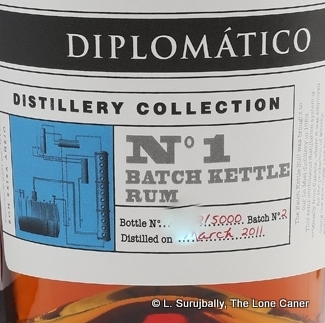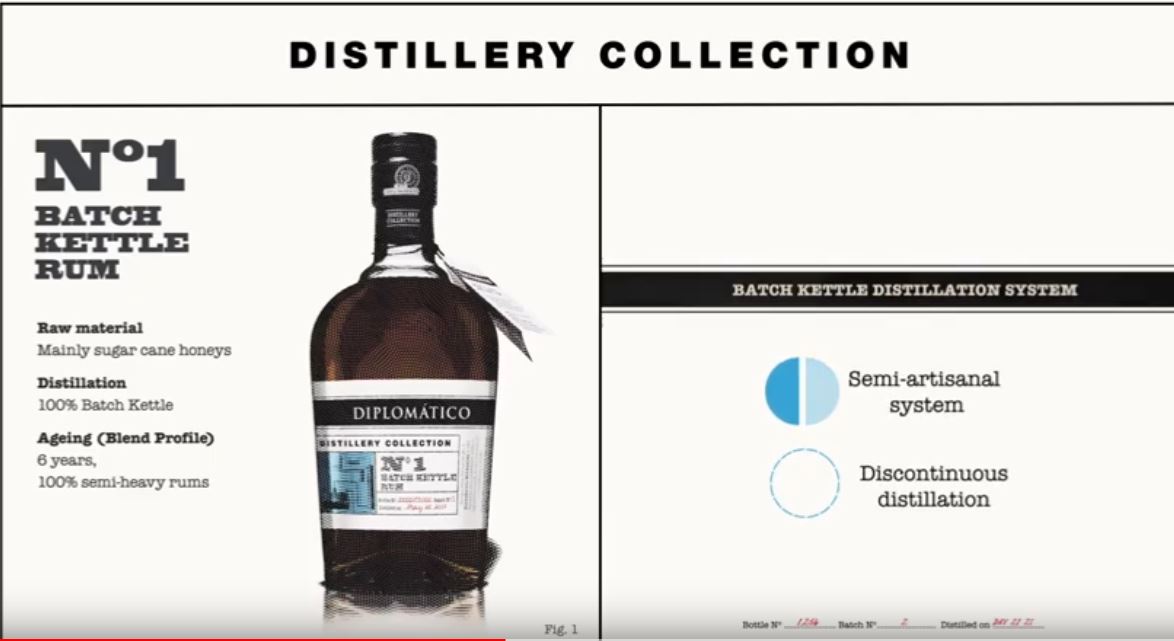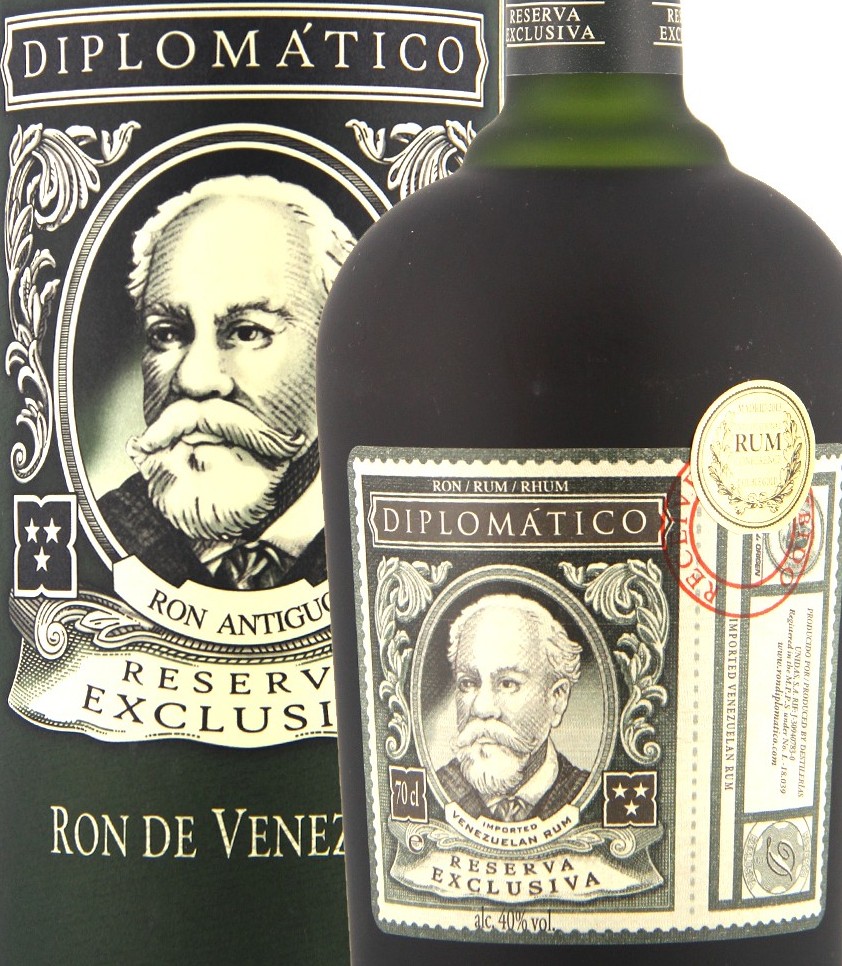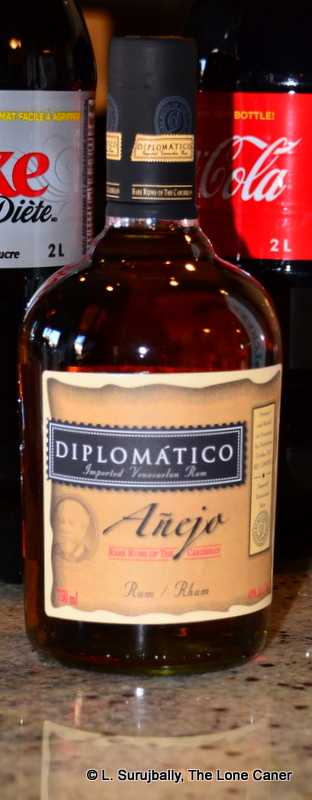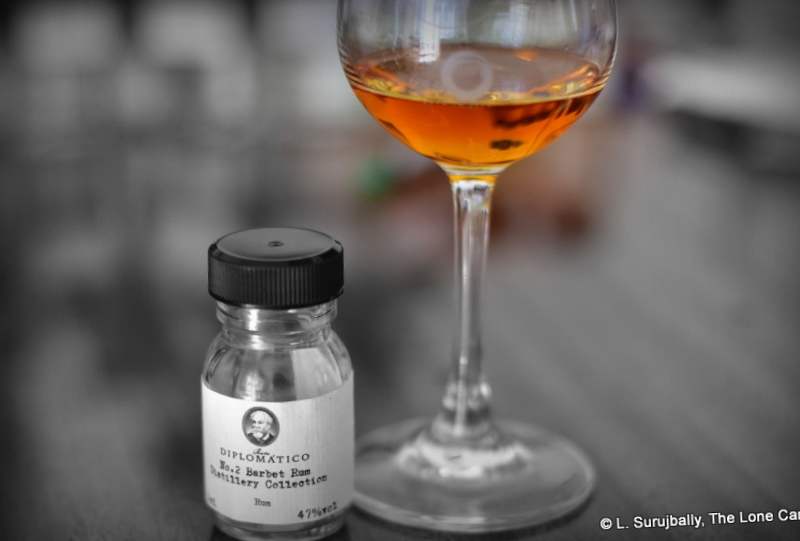
If Diplomatico’s Distillery Collection No.1 (the one from the kettle still) was a garden sprinkler trying to be a fire hose, then this one is no more than a quick leg-lift against the tree. It is a decent enough rum for the style, but lacks any kind of serious chops to make it rise above its more famous and distinct Distillery Collection siblings, or even that perennial favourite of the tippling class, the Diplo Res Ex. And that makes its price-point and supposed street cred a dubious proposition at best.
The Distillery Collection is an attempt by Diplomatico to capitalize on their various stills, much as St. Lucia Distillers or DDL do. The rums also function — maybe — to deflect attention away from their traditionally added-to products of the line, or even to break into previously untapped and dismissed niche markets for the more discerning rum drinkers. Unlike the No.1 which comes from a pot still, the No.2 owes its origin to a straight-out French-made Barbet column still, which leads one to wonder what the purpose was, because what came out the other end wasn’t anything we haven’t had before.
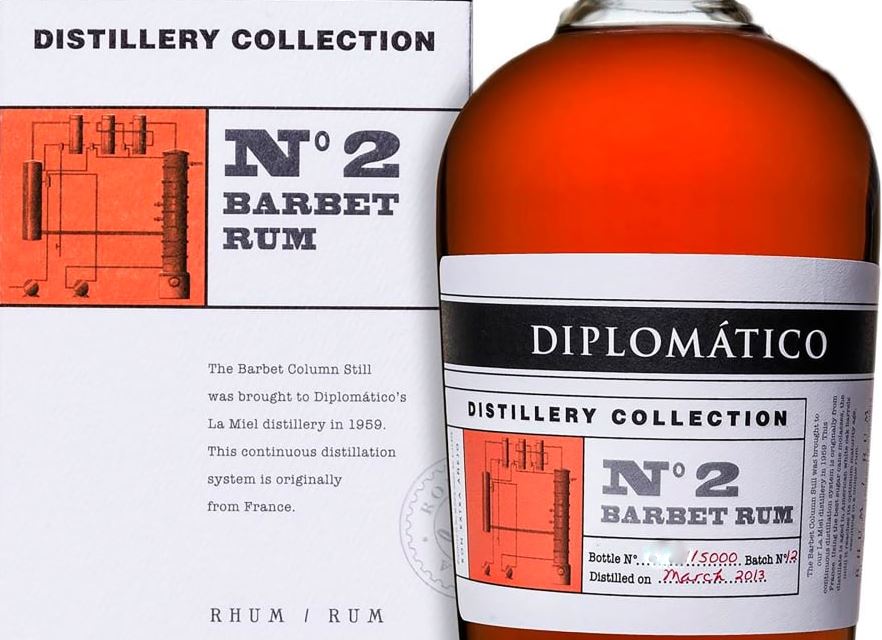
I’m not kidding. The nose was lighter than the No.1 — no shocks there, though the ABV was the same in both, 47%. Some smokiness, light oak, salt caramel ice cream, tobacco, molasses and some brine but it lacks any kind of acidic bite of (say) citrus, and there is barely any of the fruitiness that would have made it better. You’ll sense the vague sweetness of bananas, squash, papaya, melons – those neutral fruits which add little to the experience – maybe an apple starting to go, and will have to be content with that.
Unsurprisingly, the palate dials into those same coordinates: it’s warm, light, smooth, unaggressive, with the musky tastes of muscovado sugar, molasses, caramel, toffee, toblerone (the white kind). Then it falters, not because of these things, but because of the stuff that’s not there, the tart balancing notes, the sharper parts of the profile that are notable only for their lightness or complete absence – florals, fruits, oakiness. Sometimes a reasonably robust proof point rescues or bolsters such deficiencies – not here. It all leads to a lacklustre finish of medium length which displays no closing notes one would hurry back to the glass to experience: it had some salt caramel, light and overripe fruit notes, some vanilla, and it was all quite light and – dare I say it? – indifferent.
Ivar de Laat, the Dutch-born FB-commentator who recently began his own site Rum Revelations, made an interesting comment on the No.1 and Diplomatico – that they were light rum makers and it would be too much to expect them to make big and bold rums without a massive internal cultural change…which he felt was unlikely given that such rums are their style, the one upon which their revenues rested. And “as long as it’s making them money, I don’t see why they should change it.”
That’s the subtle trap of these rums, because if producers only make what sells, then there’d be ten times as many dosed rums out there (pure rums at high proof have to be really good to be sellers to succeed, because their prices are higher). We are being offered incremental change at a premium, but without real improvement or major difference. It’s cosmetic. In the case of the No.2, it’s plain boring. I could live with such a deficiency in the pot still No.1 which was at least interesting, if ultimately stopping short of being a rave recommendation. But in a column still product being marketed with pizzazz and hooplah and a tantara of trumpets…naaah.
So I give it 75, which is on the median between good and bad. It’s a rum that tastes like one and technically can be had without a problem — it would be incorrect for me to penalize what is not a really crappy product, and which many will like (assuming they can afford it, or want to). Its true failure lies in the expectations it raises and the price it commands, without deserving either. When it comes to the loosening of my purse strings, then, like Bartleby, I think I’ll chose not to.
(#654)(75/100)

